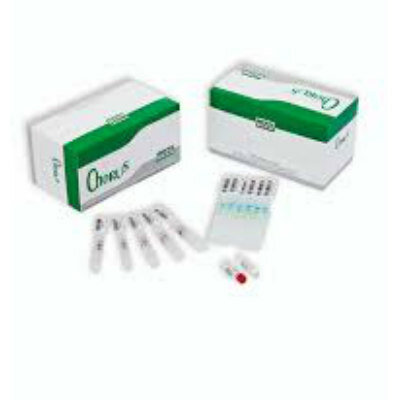Molecular Mechanism Identified That Enables Leukemia Cells to Evade Chemotherapy
By LabMedica International staff writers
Posted on 01 Feb 2012
Cancer researchers have identified a molecular mechanism used by acute myeloid leukemia (AML) cells to evade chemotherapy.Posted on 01 Feb 2012
Investigators at the University of Colorado School of Medicine (Denver, USA) used novel molecular and computational approaches to perform genome-wide short-hairpin RNA screens to identify proteins that mediate the fate of AML cells after exposure to the drug cytarabine (cytosine arabinoside). Gene expression profiling of AML cells exposed to cytarabine was carried out to identify genes with expression induced by the drug treatment. Such gene activity was compared to records of gene expression data from primary patient samples.
Results published in the January 13, 2012, online edition of the journal Leukemia strongly implicated cell-cycle checkpoint proteins, particularly WEE1, as critical mediators of AML cell survival after cytarabine exposure. Knockdown of WEE1 in a secondary screen confirmed its role in AML cell survival. Pharmacologic inhibition of WEE1 in AML cell lines and primary cells increased the potency of cytarabine.
Wee1 inhibits entry of cells into mitosis, and its absence leads to division at a premature stage and sub-normal cell size. Conversely, when Wee1 expression is increased, mitosis is delayed and cells grow to a large size before dividing. Further experiments conducted as part of the current study demonstrated that inhibition of WEE1 prevented S-phase arrest in AML cells induced by cytarabine, broadening the functions of WEE1 that may be exploited therapeutically.
“Introducing chemotherapy to cells is like putting a curve in front of a speeding car,” said first author Dr. Christopher Porter, assistant professor of pediatrics at the University of Colorado School of Medicine. “Cells that can put on the brakes make it around the corner and cells that cannot speed off the track. WEE1 is the brakes. With chemotherapy, we introduce DNA damage in cancer cells – we push them toward the curve hopefully at a greater rate than healthy cells. If WEE1 is there, cancer cells can round the curve. Without it, they flip.”
“I am optimistic that this will eventually lead to a therapeutic regimen that allows us to target AML cells that have escaped conventional therapies,” said Dr. Porter. “In light of
these data, we are already early in the clinical trial planning process.”
Related Links:
University of Colorado School of Medicine













